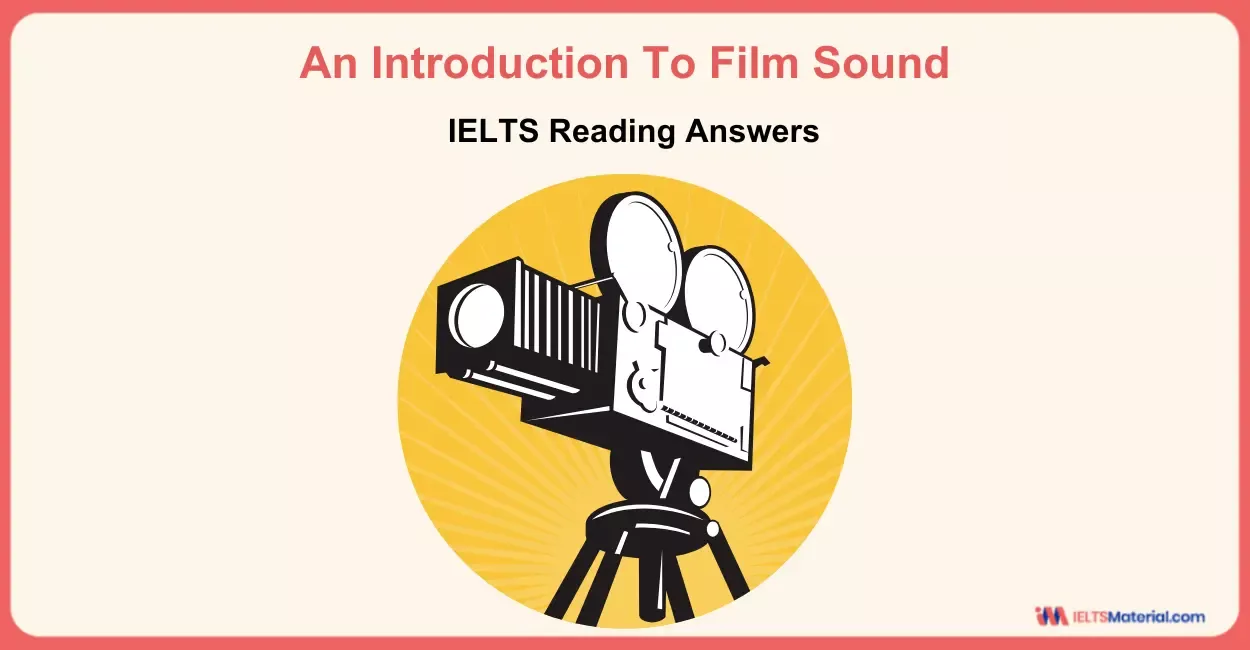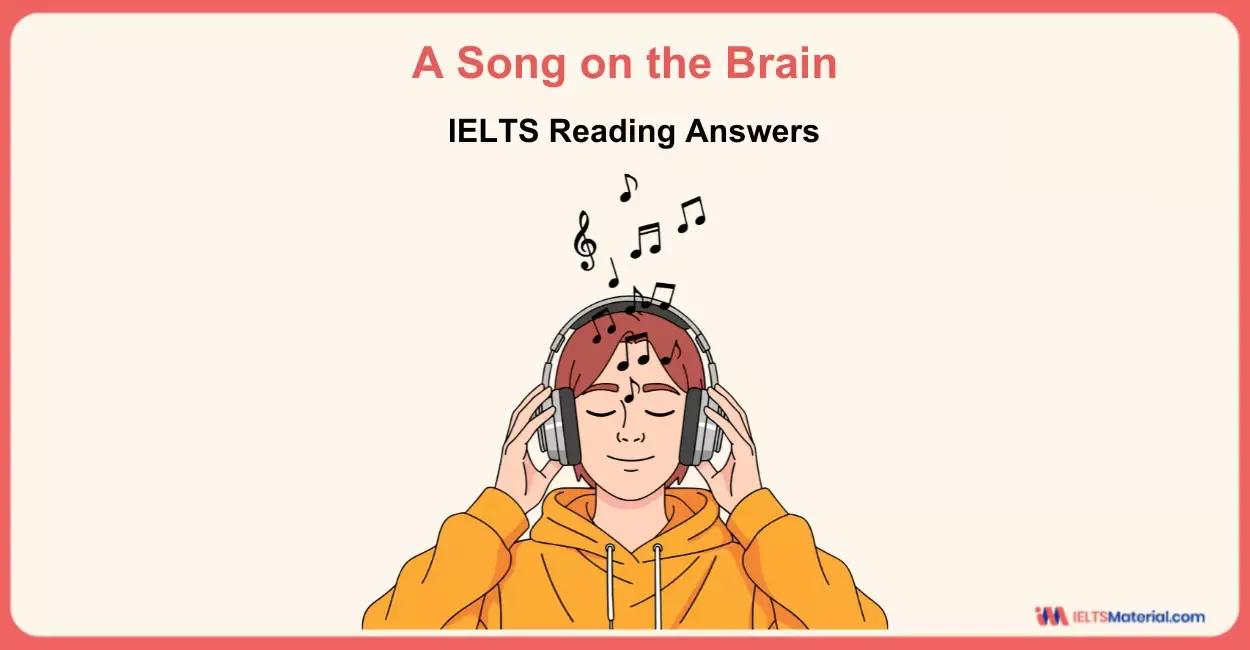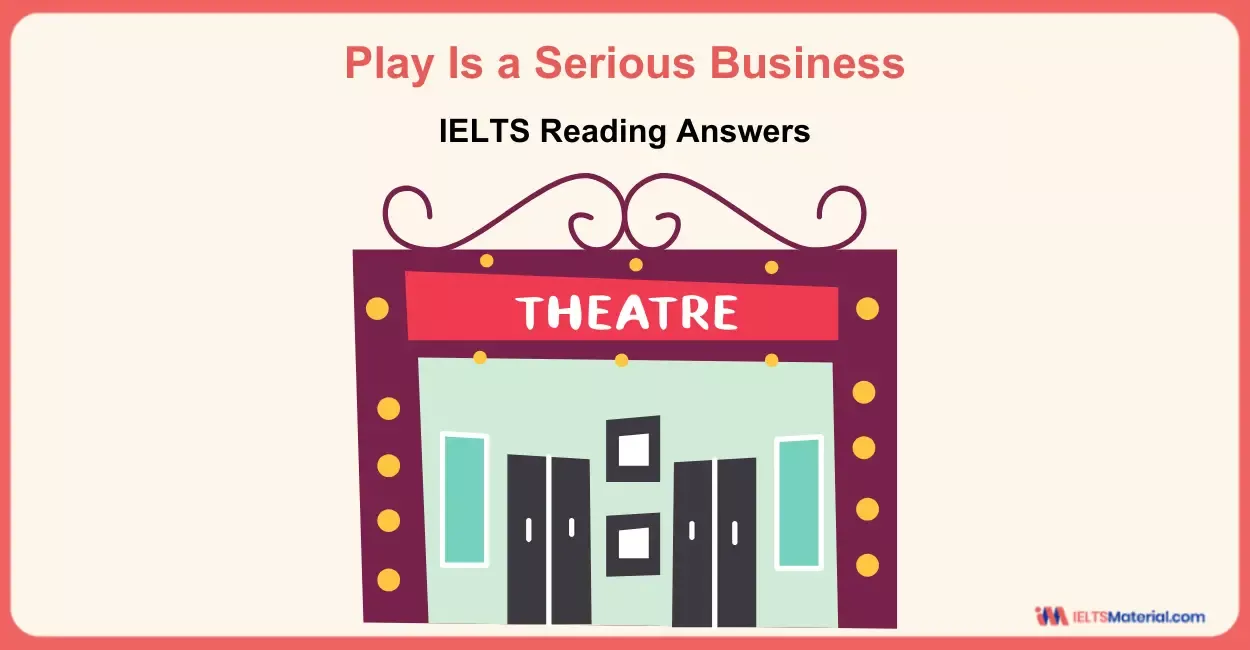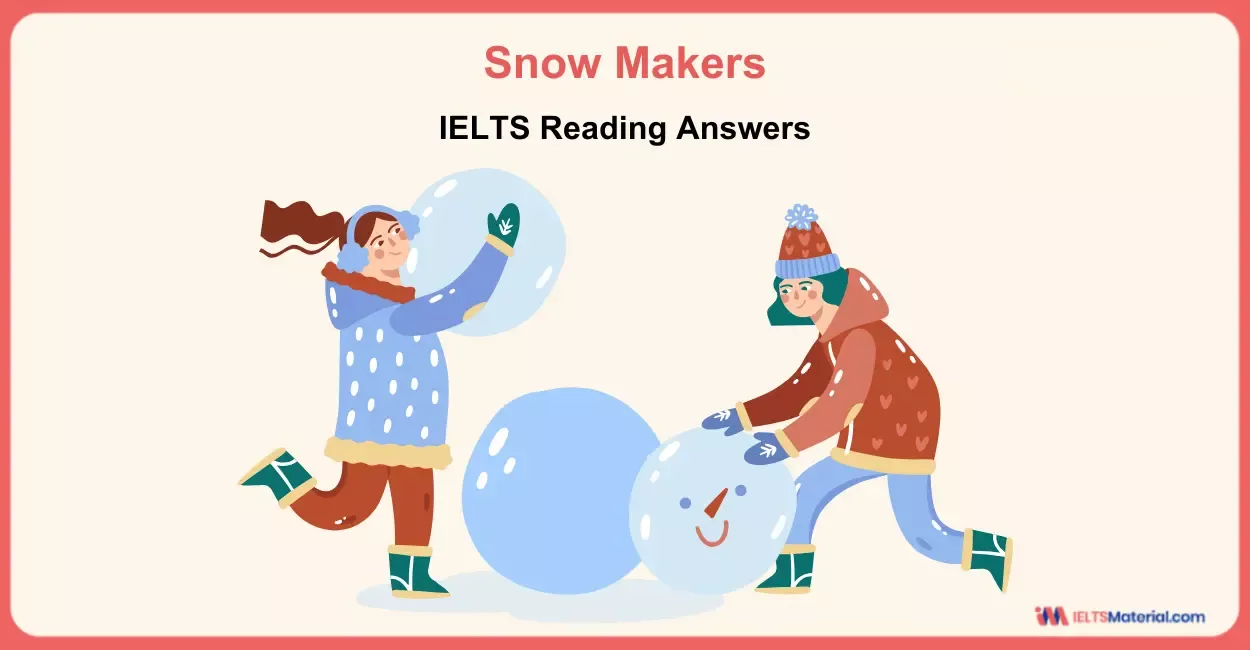Adam’s Wine - IELTS Reading Answers with Explanations
14 min read
Updated On
-
Copy link
Explore the IELTS Academic passage, Adam’s Wine, complete with detailed explanations for each answer and strategies to solve the given question types.
Table of Contents

Limited-Time Offer : Access a FREE 10-Day IELTS Study Plan!
The Reading Module of the IELTS can be the top scoring category with diligent practice. To achieve the best results in this section, you must understand how to approach and answer the different question types in the Reading Module. By solving and reviewing Sample Reading Questions like Reading Answers of Adam’s Wine, you can ensure that your reading skills are up to the mark.
The Academic passage, Adam’s Wine, is a reading passage that appeared in an IELTS Test. Since questions get repeated in the IELTS exam, these passages are ideal for practice. If you want more practice, try taking an IELTS reading practice test.
The passage, Adam’s Wine, is an IELTS Academic reading passage that consists of 15 questions. The question types found in this passage are:
- IELTS Reading Matching Headings (Q. 1-8)
- IELTS Reading Multiple-Choice Question (Q. 9-15)
To get access to a treasure trove of the best IELTS material, book a demo class for FREE!
Reading Passage
Adam’s Wine
A A Water is the giver and, at the same time, the taker of life. It covers most of the surface of the planet we live on and features large in the development of the human race. On present predictions, it is an element that is set to assume even greater significance.
B Throughout history, water has had a huge impact on our lives. Humankind has always had a rather ambiguous relationship with water, on the one hand receiving enormous benefit from it, not just as a drinking source, but as a provider of food and a means whereby to travel and to trade. But forced to live close to water in order to survive and to develop, the relationship has not always been peaceful or beneficial. In fact, it has been quite the contrary. What has essentially been a necessity for survival has turned out in many instances, to have a very destructive and life-threatening side.
C Through the ages, great floods alternated with long periods of drought have assaulted people and their environment, hampering their fragile fight for survival. The dramatic changes to the environment that are now a feature of our daily news are not exactly new: fields that were once lush and fertile are now barren; lakes and rivers that were once teeming with life are now long gone; savannah has been turned to desert. What perhaps is new is our naive wonder when faced with the forces of nature.
D Today, we are more aware of climatic changes around the world. Floods in far-flung places are instant hews for the whole world. Perhaps these events make us feel better as we face the destruction of our own property by floods and other natural disasters.
E In 2002, many parts of Europe suffered severe flood damage running into billions of euros. Properties across the continent collapsed into the sea as waves pounded the coastline wreaking havoc with sea defences. But it was not just the seas. Rivers swollen by heavy rains and by the effects of deforestation carried large volumes of water that wrecked many communities.
F Building stronger and more sophisticated river defences against flooding is the expensive short-term answer. There are simpler ways. Planting trees in highland areas, not just in Europe but in places like the Himalayas, to protect people living in low-lying regions like the Ganges Delta, is a cheaper and more attractive solution. Progress is already being made in convincing countries that the emission of carbon dioxide and other greenhouse gases is causing considerable damage to the environment. But more effort is needed in this direction.
G And the future? If we are to believe the forecasts, it is predicted that two¬thirds of the world population will be without fresh water by 2025. But for a growing number of regions of the world, the future is already with us. While some areas are devastated by flooding, scarcity of water in many other places is causing conflict. The state of Texas in the United States of America is suffering a shortage of water with the Rio Grande failing to reach the Gulf of Mexico for the first time in 50 years in the spring of 2002, pitting region against region as they vie for water sources. With many parts of the globe running dry through drought and increased water consumption, there is now talk of water being the new oil.
H Other doom-laden estimates suggest that, while tropical areas will become drier and uninhabitable, coastal regions and some low-lying islands will in all probability be submerged by the sea as the polar ice caps melt. Popular exotic destinations now visited by countless tourists will become no-go areas. Today’s holiday hotspots of southern Europe and elsewhere will literally become hotspots – too hot to live in or visit. With the current erratic behaviour of the weather, it is difficult not to subscribe to such despair.
I Some might say that this despondency is ill-founded, but we have had ample proof that there is something not quite right with the climate. Many parts of the world have experienced devastating flooding. As the seasons revolve, the focus of the destruction moves from one continent to another. The impact on the environment is alarming and the cost to life depressing. It is a picture to which we will need to become accustomed.
Questions 1-8
The Reading Passage has eight paragraphs, labelled A-I.
Choose the most suitable headings for paragraphs B-I from the list of headings below.
Write the appropriate numbers (i-xiii) in boxes 1-8 on your answer sheet.
One of the headings has been done for you as an example.
Note: There are more headings than paragraphs, so you will not use all of them.
List of Headings
i. Environmental change has always been with us
ii. The scarcity of water
iii. Rivers and seas cause damage
iv. Should we be despondent? Or realistic?
v. Disasters caused by the climate make us feel better
vi. Water, the provider of food
vii. What is water?
viii. How to solve flooding
ix. Far-flung flooding
x. Humans’ relationship with water
xi. The destructive force of water in former times
xii. Flooding in the future
xiii. A pessimistic view of the future
| Example Answer
Paragraph A vii |
1 Paragraph B
2 Paragraph C
3 Paragraph D
4 Paragraph E
5 Paragraph F
6 Paragraph G
7 Paragraph H
8 Paragraph I
Questions 9-15
9 The writer believes that water
A is gradually becoming of greater importance.
B will have little impact on our lives in future.
C is something we will need more than anything else.
D will have even greater importance in our lives in the future.
10 Humankind’s relationship with water has been
A two-sided.
B one-sided.
C purely one of great benefit.
D fairly frightening.
11 The writer suggests that
A we are in awe of the news we read and see on TV every day.
B change to the environment leaves us speechless.
C we should not be in awe of the news we read and see on TV every day.
D our surprise at the environmental change brought about by nature is something new.
12 According to the text, planting trees
A has to be co-ordinated internationally.
B is more expensive than building sea and river defences.
C is a less expensive answer to flooding than building river defences.
D is not an answer to the problem of flooding in all regions.
13 By 2025, it is projected that
A at least half the world population will have fresh water.
B the majority of the world population will have fresh water.
C one-third of the world population will have fresh water.
D fresh water will only be available to half of the world population.
14 According to the text, in the future low-lying islands
A will still be habitable.
B will not be under water.
C are likely to be under water.
D will probably not be under water.
15 According to the writer,
A people do not need to get used to environmental damage.
B people will need to get used to climate changes that cause environmental damage.
C people are now more used to environmental damage than they have been in the past.
D the general despondency about environmental changes is ill-founded.
Answers of Adam’s Wine Reading Answers with Location and Explanation
1 Answer: x
Question type: Matching Heading
Answer locations: Paragraph B
Answer explanations: In the first sentence of paragraph B,it is given that water ‘had a huge impact’ on ‘our lives’ (human lives). In the second sentence, it continues to mention that humankind has always had ‘a rather ambiguous relationship with water’. On one hand ‘receiving enormous benefit’ like being ‘a drinking source’, ‘a provider of food’ and ‘a means whereby to travel and to trade’, on the other hand, when forced to live close to the water in order to survive and to develop, ‘the relationship has not always been peaceful or beneficial’. So, the answer is x ( Humans’ relationship with water).
2 Answer: i
Question type: Matching Heading
Answer locations: Paragraph C
Answer explanations: In Paragraph C, the writer reveal that the ‘dramatic changes to the environment’ (environmental changes) that are now a feature of our daily news are ‘notexactly new’ (‘has always been with us). Some examples for this statement is also provided: ‘fields that were once lush and fertile are now barren; lakes and rivers that were once teeming with life are now long gone; savannah has been turned to desert’. So, the answer is i ( Environmental change has always been with us).
3 Answer: v
Question type: Matching Heading
Answer locations: Paragraph D
Answer explanations: In paragraph D, the writer indicates that ‘these events’ (climatic changes like floods in far-flung places) ‘make us feel better’, as we face the destruction of our own property by ‘floods and other natural disasters’ (disaster caused by climate). So, the answer is v (Disasters caused by the climate make us feel better).
4 Answer: iii
Question type: Matching Heading
Answer locations: Paragraph E
Answer explanations: The main point of paragraph E is how damages are caused by rivers and seas. Many parts of Europe suffered ‘severe flood damage’. Sometimes, ‘properties collapsed into the sea as waves pounded’ the coastline, ‘wreaking havoc with sea defenses’. Even ‘rivers carried large volumes of water’ that ‘wrecked many communities’. So, the answer is iii (Rivers and seas cause damage).
Unlock Answer
Signup/Login and get access to the answers
5 Answer: viii
Question type: Matching Heading
Answer locations: Paragraph F
Answer explanations: Paragraph F discusses some ways to solve flooding. ‘Building stronger and more sophisticated river defenses against flooding’ is an expensive short-term answer to flooding. Some simpler ways are ‘planting trees in highland areas, protecting people living in low-lying regions’ and even convincing countries to control ‘emission of carbon dioxide and other greenhouse gases’ is a step worth trying. So, the answer is viii (How to solve flooding).
6 Answer: ii
Question type: Matching Heading
Answer locations: Paragraph G
Answer explanations: Paragraph G discussed the prediction that ‘two-thirds of the world population will be without fresh water by 2025’. While some areas are devastated by flooding, ‘scarcity of water’ in many other places is ‘causing conflict’. So, the answer is ii (The scarcity of water).
7 Answer: xiii
Question type: Matching Heading
Answer locations: Paragraph H
Answer explanations: Paragraph H presents some ‘doom-laden estimates’ (pessimistic view) which tells us that while ‘tropical areas will become drier and uninhabitable, coastal regions and some low-lying islands will in all probability be submerged by the sea as the polar ice caps melt’. It continues to say that ‘popular exotic destinations now visited by countless tourists will become no-go areas’ and ‘today’s holiday hotspots will literally become hotspots – too hot to live in or visit’. Hence, the answer is xiii (A pessimistic view of the future).
8 Answer: iv
Question type: Matching Heading
Answer locations: Paragraph I
Answer explanations: In paragraph I, the writer says that ‘this despondency’ (the doom-laden estimates given in the previous paragraph) is ill-founded, but he also adds that we have had ‘ample proof’ (realistic) that there is ‘something not quite right with the climate’. He gives some examples of the ‘proof’ – ‘many parts of the world have experienced devastating flooding’ and ‘the focus of the destruction moves from one continent to another’ with the change in seasons. So, he says that we will need to become accustomed to these changes and prepare ourselves. Hence the answer is iv (Should we be despondent? Or realistic?).
9 Answer: D
Question type: Multiple Choice Question
Answer locations: Paragraph A
Answer explanations: In paragraph A, the main idea is how water is or will become important to us. In the beginning, the writer mentions some facts about water like ‘water is the giver and … the taker of life’, ‘it covers most of the surface of the planet’, and ‘features large in the development of the human race’. So, if we take these into account, it is ‘an element that is set to assume even greater significance’ (have even greater importance in our lives in the future). Hence, the answer is D.
10 Answer: A
Question type: Multiple Choice Question
Answer locations: Paragraph B
Answer explanations: In the first sentence of paragraph B,it is given that water ‘had a huge impact’ on human lives. It continues to mention that humankind has always had ‘a rather ambiguous relationship with water’. On one hand ‘receiving enormous benefit’ like being ‘a drinking source’, ‘a provider of food’ and ‘a means whereby to travel and to trade’, but, when forced to live close to the water in order to survive and to develop, ‘the relationship has not always been peaceful or beneficial’. So, the answer is ‘two-sided’ which is option A.
11 Answer: D
Question type: Multiple Choice Question
Answer locations: Paragraph C
Answer explanations: In the beginning of paragraph C, the writer states that the ‘dramatic changes to the environment’ that are now a feature of our daily news ‘are not exactly new’. Later, he adds that what perhaps is ‘new’ is our ‘naive wonder’ (surprise) when faced with the forces of nature’. So, the answer is D (our surprise at the environmental change brought about by nature is something new).
12 Answer: C
Question type: Multiple Choice Question
Answer locations: Paragraph F
Answer explanations: In paragraph F the writer discusses that ‘building stronger and more sophisticated river defenses’ against flooding is ‘expensive’. There are other ways like ‘planting trees’ in highland areas’ like in Europe and Himalayas and ‘low-lying regions’ like the Ganges Delta, which is a ‘cheaper solution’ (less expensive answer). So, the answer is C ( is a less expensive answer to flooding than building river defences.).
13 Answer: C
Question type: Multiple Choice Question
Answer locations: Paragraph G
Answer explanations: In paragraph G, the writer mentions the prediction that ‘two-thirds of the world population’ will be ‘without fresh water’ by ‘2025’. This means that the remaining one-third of the world population will get fresh water. So, the answer is option C (one-third of the world population will have fresh water).
14 Answer: C
Question type: Multiple Choice Question
Answer locations: Paragraph H
Answer explanations: In paragraph H, the writer speaks of ‘doom-laden estimates’ and suggests that while tropical areas will become drier and uninhabitable, coastal regions and some ‘low-lying islands’ will in all probability be ‘submerged by the sea’ (will be underwater) as the polar ice caps melt. So, the answer is option C (are likely to be under water).
15 Answer: B
Question type: Multiple Choice Question
Answer locations: Paragraph I
Answer explanations: At the end of paragraph I, the writer says that the ‘impact on the environment’ (climate changes) is alarming and the cost to life depressing, but it is a picture to which ‘we’ (people) will need to become ‘accustomed’ (get used to). So, the answer is option B (people will need to get used to climate changes that cause environmental damage).
Tips to Solve the Question Types in Adam’s Wine Reading Answers
Since you now have the Adam’s Wine Reading Answers Key with explanations, let us check out some quick tips to answer the three types of questions in the Reading Answers of Adam’s Wine.
Matching Headings:
You must match the heading in this type of question to the appropriate paragraph or reading segment in the text. Your ability to figure out the paragraph’s key concept and its supporting ideas will be put to the test.
- Take your time to rephrase the potential headings’ keywords.
- Find the main idea by scanning and skimming the paragraphs. Sometimes the essential idea of the paragraph is expressed in the header.
- For clarification on the paragraph’s main idea, see the first and last sentences. Likewise, quickly scan the middle of the paragraph to make sure you comprehend it.
- Don’t try to match words. Your primary goal is to match a correct paragraph.
- Choose the heading that best fits the paragraph after reading it again if two seem to be appropriate.
- The number of headings will always be greater than the number of paragraphs or sections. Therefore, some headings will never be utilized.
Multiple Choice Question:
- The multiple-choice questions in the IELTS reading test are one of the trickiest types of questions.
- It requires you to choose the accurate answer from 3 to 4 proposed answers.
- You should begin by scanning the reading text for specific information.
- Then, you need to understand the paraphrasing and synonyms in the passage.
- Finally, using reading techniques and the keywords, answer the questions accordingly.
Useful Links:
Practice IELTS Reading based on question types

Start Preparing for IELTS: Get Your 10-Day Study Plan Today!
Explore other Reading Practice Tests

Kasturika Samanta

Nehasri Ravishenbagam

Nehasri Ravishenbagam

Kasturika Samanta
Recent Articles

Nehasri Ravishenbagam

Haniya Yashfeen

Haniya Yashfeen

Haniya Yashfeen




Post your Comments
1 Comment